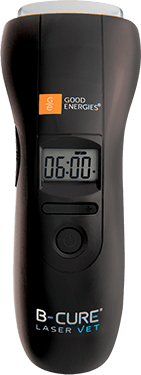A Comprehensive Guide to Pododermatitis in Dogs: Symptoms, Diagnosis, and Treatment
Pododermatitis, an inflammatory condition affecting a dog’s paw pads, can be a source of significant discomfort and pain for our beloved canine companions. As responsible pet owners, understanding pododermatitis, its early symptoms, and seeking prompt veterinary care is crucial to ensure timely treatment and a speedy recovery.
In recent years, laser therapy, including BCURE laser therapy, has emerged as a promising approach in veterinary dermatology, offering effective treatment for pododermatitis. In this comprehensive guide, we will explore pododermatitis in dogs, its prevalence, early symptom recognition, diagnosis methods, conventional treatments, the emergence of laser therapy, success stories of pododermatitis remission, and the potential of integrative approaches in managing this condition.
Understanding Pododermatitis and Its Prevalence in Dogs
Pododermatitis, or interdigital dermatitis, is a common condition characterized by inflammation and infection of a dog’s paw pads. It often affects the interdigital spaces, the areas where the toes meet, leading to redness, swelling, pain, and the formation of lesions or abscesses. Several factors contribute to the development of pododermatitis in dogs, including allergies, foreign objects lodged between the toes, bacterial or fungal infections, and autoimmune disorders.
Pododermatitis can be prevalent among certain breeds, including Bulldogs, Labrador Retrievers, and Spaniels, due to their physical characteristics and genetic predispositions. Understanding the prevalence of this condition can help pet owners be vigilant and proactive in recognising early symptoms.
Recognizing Early Symptoms and Seeking Veterinary Care
Early recognition of pododermatitis symptoms is crucial in providing timely and effective treatment for our furry friends. The initial signs of pododermatitis may include:
- Licking or Chewing the Paws: Excessive licking or chewing of the paws is a common indicator of discomfort or pain in the paw pads.
- Lameness or Reluctance to Walk: Dogs with pododermatitis may limp or be hesitant to put weight on the affected paws.
- Redness and Swelling: Inflamed paw pads may appear red, swollen, and tender to the touch.
- Formation of Lesions or Sores: The development of blisters, pustules, or ulcerations between the toes is a sign of pododermatitis.
- Unpleasant Odor: Bacterial or fungal infections associated with pododermatitis can cause an unpleasant odour from the affected paws.
If you notice any of these symptoms, seeking prompt veterinary care is essential. A veterinarian will conduct a comprehensive examination to diagnose pododermatitis accurately and recommend appropriate treatment.
Diagnosis Methods and the Importance of Early Detection
A thorough veterinary examination is crucial for diagnosing pododermatitis and identifying any underlying causes. The veterinarian will perform a physical examination of the paws, looking for redness, swelling, and lesions. Additionally, they may inquire about the dog’s medical history, recent activities, and exposure to potential allergens.
To rule out other possible causes of similar symptoms, the veterinarian may conduct skin scrapings, bacterial or fungal cultures, and allergy testing. Early detection of pododermatitis allows for timely intervention and reduces the risk of complications.
Exploring Conventional Treatments for Pododermatitis
The treatment of pododermatitis in dogs depends on the underlying cause and the severity of the condition. Conventional treatments may include:
- Topical Medications: Antiseptic or antibiotic ointments are often prescribed to treat bacterial or fungal infections.
- Oral Medications: In more severe cases, veterinarians may prescribe oral antibiotics, antifungals, or anti-inflammatory medications.
- Pain Management: Pain relievers or anti-inflammatory drugs may be prescribed to alleviate discomfort and inflammation.
- Foot Soaks or Cleansing Solutions: Soaking the affected paws in gentle cleansing solutions can help reduce swelling and cleanse the area.
- E-collar or Bandaging: To prevent further irritation or licking of the paws, an Elizabethan collar or bandaging may be recommended.
While conventional treatments can be effective, some cases of pododermatitis may prove challenging to manage. In such instances, alternative and complementary therapies, like laser pet therapy, may be considered.
The Emergence of Laser Therapy in Veterinary Dermatology
Laser therapy, including BCURE laser therapy, has gained popularity in veterinary dermatology as a safe and effective treatment for pododermatitis. This innovative approach, also known as Low-Level Laser Therapy (LLLT) or Cold Laser Therapy, utilizes specific wavelengths of light to stimulate cellular activity and promote tissue repair.
The laser’s light penetrates the inflamed tissues, stimulating the mitochondria within the cells. This process increases ATP production, which fuels cellular processes, including protein synthesis and DNA repair. Additionally, laser therapy triggers the release of anti-inflammatory substances, reducing swelling and alleviating pain.
One significant advantage of laser therapy is its non-invasive nature, requiring no incisions or needles. The procedure is painless, and most dogs find it comfortable and even relaxing. Laser therapy offers targeted treatment, allowing veterinarians to focus on specific areas of the paw pads, ensuring accuracy and effectiveness.
Integrative Approaches: Combining Laser Therapy with Traditional Treatments
Integrative approaches that combine laser therapy with conventional treatments have shown promising results in managing pododermatitis. Laser therapy enhances the body’s natural healing processes, promoting tissue repair and reducing inflammation. When used alongside topical or oral medications, laser therapy can offer a more comprehensive and effective treatment plan for dogs with pododermatitis.
Conclusion
Pododermatitis in dogs is a common condition that requires prompt recognition and treatment to alleviate discomfort and prevent complications. Understanding the prevalence of pododermatitis and recognizing early symptoms are essential for seeking timely veterinary care.
Conventional treatments can be effective, but for challenging cases, the emergence of laser therapy, including BCURE laser therapy, offers a modern and non-invasive approach to managing pododermatitis. With its remarkable success stories and safety profile, laser therapy is revolutionizing veterinary dermatology and providing hope for a brighter and healthier future for our canine companions.
If your furry friend is experiencing pododermatitis, consult with a veterinarian to explore the potential benefits of laser therapy and integrative approaches to ensure a swift recovery and a happy, pain-free life for your beloved pet.




